Introduction
Crispy fried broad beans, also known as fried fava beans, are a delightful snack enjoyed worldwide. Their nutty flavor and crunchy texture make them an irresistible treat, perfect for munching on while watching a movie, enjoying a drink with friends, or simply indulging in a moment of self-care. While many people might think that preparing fried broad beans is a complex culinary endeavor, it’s actually quite straightforward once you know the right techniques and tips. In this comprehensive guide, we’ll walk you through every step of making perfect fried broad beans at home, from selecting the best beans to achieving the perfect crispiness.

Section 1: Understanding Broad Beans
Before diving into the recipe, it’s essential to understand a bit about broad beans (Vicia faba), also known as fava beans. These legumes are native to the Mediterranean region and have been cultivated for thousands of years. They are highly nutritious, rich in protein, fiber, vitamins, and minerals. Broad beans have a unique, slightly sweet and nutty flavor that becomes even more pronounced when they are roasted or fried.
1 Varieties of Broad Beans
There are several varieties of broad beans, each with its own unique characteristics. For frying, you should opt for fresh, young broad beans that are firm and have a bright green color. Older beans tend to be starchier and less suitable for frying. If you can’t find fresh broad beans, dried broad beans can also be used, but they require soaking and cooking before frying.
2 Nutritional Benefits
Broad beans are a powerhouse of nutrition. They are high in dietary fiber, which aids in digestion, and are a good source of protein, making them a great plant-based alternative to meat. They also contain essential vitamins and minerals such as vitamin C, vitamin K, iron, magnesium, and potassium. Incorporating fried broad beans into your diet can be a delicious way to boost your nutritional intake.
Section 2: Preparing the Broad Beans
The key to making delicious fried broad beans lies in proper preparation. This includes selecting the right beans, cleaning them thoroughly, and sometimes soaking and blanching them if using dried beans.
1 Selecting Fresh Broad Beans
When choosing fresh broad beans, look for pods that are firm, bright green, and free of bruises or spots. The beans inside should be plump and not too dry. Avoid beans that are shriveled or have discoloration, as these may be past their prime.
2 Cleaning the Beans
Once you have your beans, start by removing them from their pods. This can be a bit tedious, but the end result is worth it. Rinse the beans under cold running water to remove any dirt or debris. If you’re using dried beans, soak them in water overnight or for at least 8 hours. This will soften them and make them easier to cook.
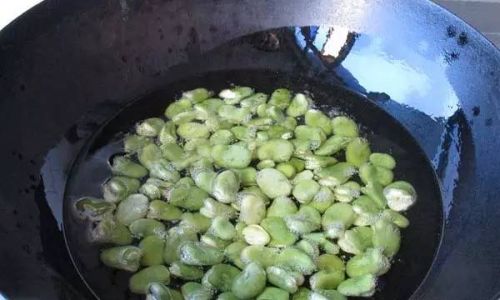
3 Blanching (Optional)
If you’re using fresh beans, blanching them before frying can help remove some of their natural starchiness, resulting in a crisper texture. To blanch the beans, bring a large pot of salted water to a boil. Add the beans and cook for about 2-3 minutes, then quickly transfer them to an ice bath to stop the cooking process. Drain and pat them dry with paper towels.
Section 3: Seasoning and Coating the Beans
Before frying, seasoning and coating the beans can add an extra layer of flavor and help achieve a crunchy exterior.
1 Seasoning Options
You can season your broad beans with salt, pepper, garlic powder, paprika, or any other spices you prefer. A simple blend of salt and pepper is often enough to highlight the beans’ natural flavor. For a more complex flavor profile, try mixing in some cumin, chili powder, or even a touch of citrus zest.
2 Coating the Beans
Coating the beans in a thin layer of flour, cornstarch, or a combination of both can help create a crispy crust when they are fried. This step is optional but highly recommended for achieving the perfect texture. Make sure to toss the beans gently in the coating to ensure an even distribution.
Section 4: Frying the Broad Beans
Now, it’s time to fry your broad beans. This is where the magic happens, transforming simple legumes into a crispy, delicious snack.
1 Choosing the Right Oil
The type of oil you use for frying can make a significant difference. Neutral oils like canola, peanut, or grapeseed oil are ideal because they have a high smoking point and don’t add unwanted flavors to the beans. Avoid using olive oil for frying, as its lower smoking point can cause the oil to smoke and burn, affecting the taste of your beans.
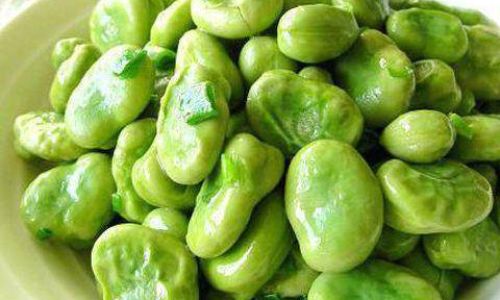
2 Heating the Oil
Pour enough oil into a deep frying pan or a deep fryer to fully submerge the beans. Heat the oil to 350-375°F (175-190°C). Use a thermometer to monitor the temperature accurately, as this is crucial for achieving the perfect crispiness without burning the beans.
3 Frying the Beans
Working in batches to avoid overcrowding the pan, carefully add the coated beans to the hot oil. Fry them for about 2-3 minutes, or until they are golden brown and crispy. Use a slotted spoon or frying basket to remove the beans from the oil and let them drain on paper towels to remove any excess oil.
4 Adjusting the Cooking Time
Keep in mind that the cooking time may vary depending on the size of the beans and the temperature of the oil. It’s always best to test a few beans first to get a feel for how long they need to cook. If they are not crispy enough after the initial frying, you can increase the cooking time slightly for the remaining batches.
Section 5: Enhancing Flavor and Serving Suggestions
Once your broad beans are fried to perfection, there are several ways to enhance their flavor and enjoy them.
1 Adding a Touch of Heat
For a spicy kick, sprinkle the fried beans with a pinch of red pepper flakes, cayenne pepper, or even a drizzle of hot sauce. This will elevate their flavor and make them even more irresistible.
2 Incorporating Herbs and Spices
Fresh herbs like parsley, cilantro, or mint can add a refreshing note to your fried beans. Simply chop the herbs and toss them with the beans just before serving. You can also sprinkle them with a bit of grated lemon zest or a squeeze of fresh lemon juice for a burst of brightness.

3 Serving Suggestions
Fried broad beans are versatile and can be enjoyed in various ways. Serve them as a standalone snack with a cold beer or a glass of wine. They also make a great addition to salads, grain bowls, or even as a crunchy topping for soups and stews. For a more indulgent treat, try pairing them with a dollop of yogurt or a creamy dip like hummus.
Section 6: Storage and Reheating
If you have leftovers or want to make a larger batch to enjoy later, here’s how to store and reheat your fried broad beans.
1 Storage
Let the fried beans cool completely, then transfer them to an airtight container or a resealable plastic bag. Store them in the refrigerator for up to 3 days. For longer storage, you can freeze the beans in a single layer on a baking sheet, then transfer them to a freezer-safe container or bag. They can be kept in the freezer for up to 3 months.
2 Reheating
To reheat your fried broad beans, preheat your oven to 350°F (175°C). Spread the beans in a single layer on a baking sheet and bake for about 5-7 minutes, or until they are heated through and crispy again. Alternatively, you can reheat them in a single layer in a skillet over medium heat, stirring occasionally until they are warmed up.
Conclusion
Making crispy fried broad beans at home is a rewarding culinary endeavor that yields delicious results. By following the steps outlined in this guide, from selecting the right beans to frying and seasoning them perfectly, you can enjoy a snack that’s both nutritious and indulgent. Whether you’re looking for a simple appetizer, a crunchy addition to your meal, or just a tasty snack to munch on, fried broad beans are a fantastic choice. So, why wait? Gather your ingredients, roll up your sleeves, and start frying! Your taste buds will thank you.
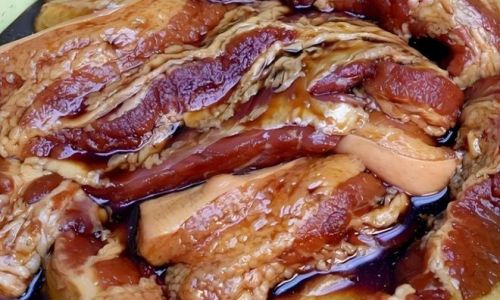
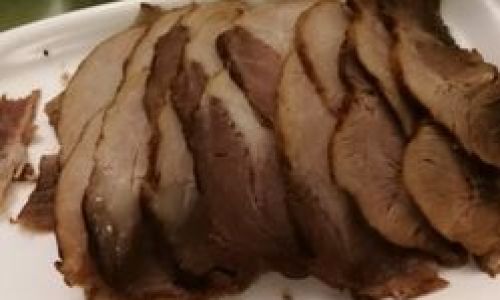
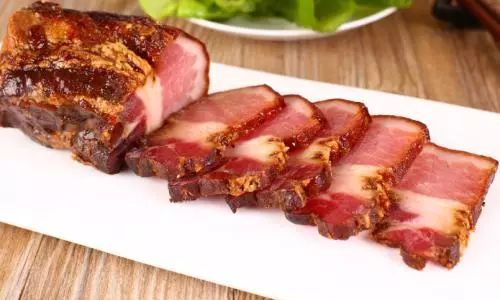
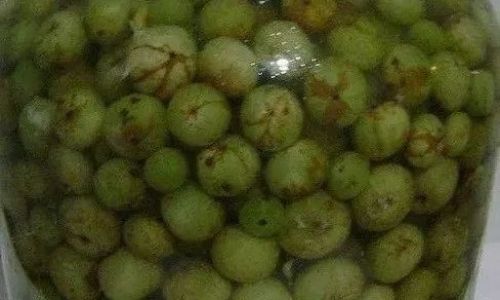

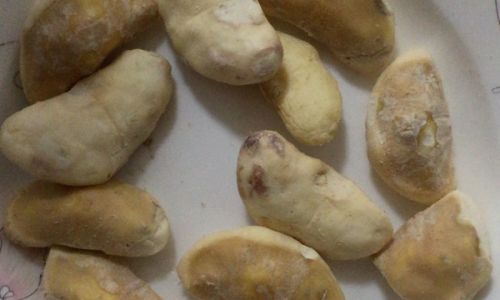
0 comments